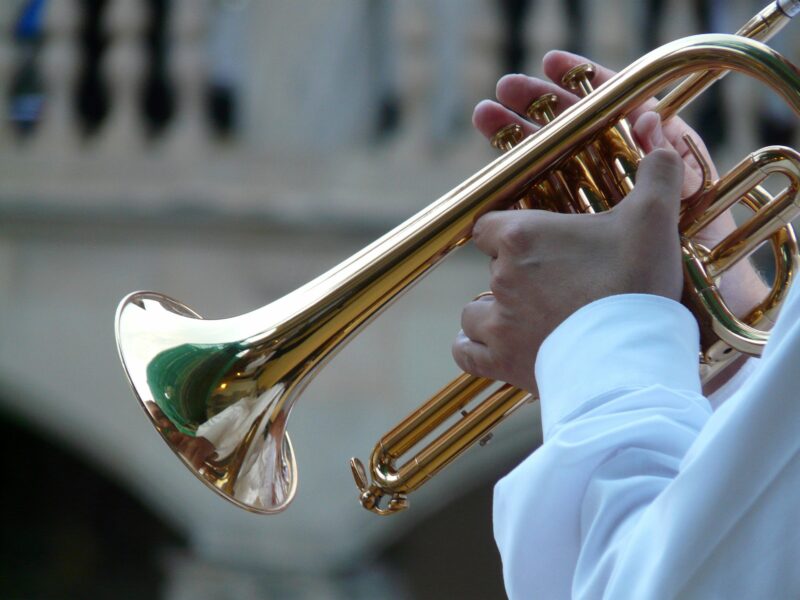 Brass is an incredibly powerful and versatile instrument family. Why?
Brass is an incredibly powerful and versatile instrument family. Why?
First: brass is driven by the breath of air of the player, as well as shaped by the tonguing to produce different sounds.
Second: brass also have a very wide dynamic range, and the tonal character and harmonic overtones changes a lot over the full range from the softest to the loudest dynamics.
As a composer of orchestral and cinematic music, you really need to learn how to use these articulations in your VST plugins and Sample Libraries with brass.
I created this Guide (Cheat Sheet) for you with the most common articulations (playing techniques) in the orchestral brass family.
Brass Articulations Guide
Sustain (Non Legato)
The normal sustaining notes without legato. Each note is tongued separately which makes every note attack clear (as opposed to Legato).
Legato
Legato is on brass is played without tonguing, to produce a smooth note transition.
Tenuto
Tenuto means (to hold), meaning hold the note to its full length. Depending on context, it can sometimes mean to add an emphasis on the note.
Marcato
An accented note (heavy accent), with a sharper attack than the surrounding notes.
Sforzando
Play a note with sudden, strong emphasis.
Staccato
Short notes where each individual note is tongued and separated.
Staccatissimo
Very short notes, basically a shorter version of a Staccato.
Vibrato
A slight pitch variation above and below a note. Adding anything from light, to medium to heavy vibrato to the sustained note.
Crescendo
Gradually increasing (growing) the dynamics while holding the note.
Diminuendo
Gradually diminishing (reducing) the dynamics while holding the note.
Swell
Similar increase of dynamics as a crescendo, but shorter and more exponential dynamic curve compared to the gradual and longer crescendo.
Double & Triple Tonguing
These are played with partial tonguing in groups of two or three to give a very rapid articulation (fast repetitions).
Fluttertonguing
A technique using rolled ‘r’ tonguing, which produces a very special tonal character.
Fortepiano
Play the attack loudly and then immediately get soft (often followed by a crescendo).
Portamento (Glissando)
A portamento (or glissando) is a continuous slide upwards or downwards between two notes.
The difference is that a portamento can be thought of as a longer version of legato, while a glissando is more focused on the gradual pitch-slide, than connecting the notes in a legato fashion like the portamento.
Falls
A short pitch-down and diminuendo to silence, most often in the ending of a phrase.
Scoop
Playing a short upwards glissando to a specific pitch.
Doit
Playing a short upwards glissando stab away from a specific pitch.
Rip
A loud and aggressive scoop over a large range of notes with a clear beginning and target pitch.
Trills
Rapidly alternating between 2 notes, most often either a minor 2nd interval or major 2nd interval.
Mutes (many options)
You can use various sorts of “mutes” in the brass instrument to soften the sound and change the overall tonal character. Common mutes to use are: Straight, Bucket, Cup, Harmon and Plunger.
